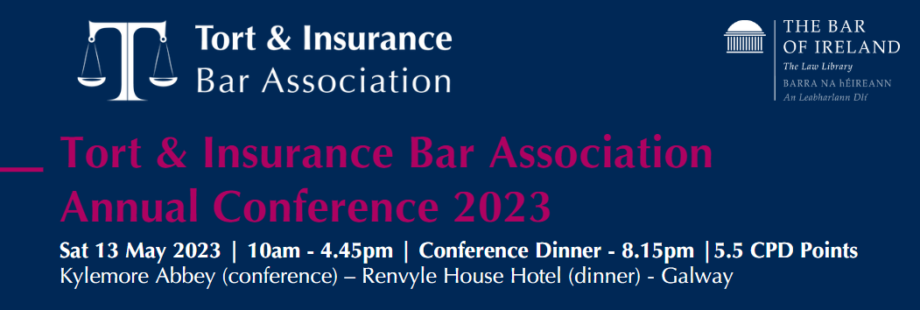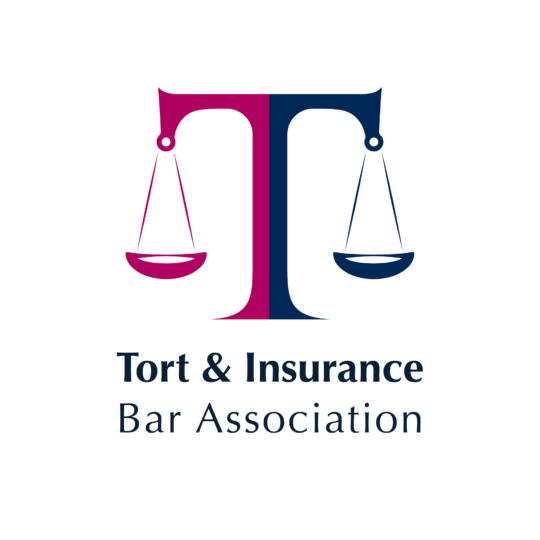
In the recent Court of Appeal Judgment in Keating v Mulligan [2022] IECA 257, Noonan J. reaffirmed the principles governing applications pursuant to Section 26 of the Civil Liability and Courts Act 2004.
His judgement provided a stark warning to practitioners of the circumstances in which an unfocused or unduly enthusiastic Section 26 application may give rise to an award of aggravated damages as against a Defendant.
Ben Clarke BL examines the key points.
Section 26 of the Civil Liability and Courts Act 2004 provides a mechanism whereby a plaintiff’s personal injuries action may be dismissed where it is found to be materially based on fraudulent or misleading evidence, or known to be false or misleading.
Facts of the Case: A tale of two injuries.
The Plaintiff’s claim arose in the context of injuries which she had suffered while travelling as a passenger on a Luas, which was involved in a relatively minor accident. While the Plaintiff initially complained of low back pain, it was her right shoulder and neck which continued to be symptomatic and which, at about twenty-seven months post-accident, were deemed by the Plaintiff’s consultant orthopaedic surgeon to have become permanent. The trial commenced, and after two days at hearing, the Plaintiff’s solicitor sought an up to date medical report from the Plaintiff’s general practitioner.
The updated report disclosed for the first time that the Plaintiff had been involved in a second accident, also on the Luas, on 28 August 2017, fourteen months after the accident, the subject matter of the proceedings in question. Prior to the delivery of the updated report the fact of the second accident had never been disclosed to the Defendant’s solicitors, notwithstanding a Notice for Particulars which sought details of any accidents or injuries, either pre or post the index accident. In the usual way the Plaintiff’s Replies to Particulars were verified by Affidavit.
A further fact of relevance which emerged in the course of the hearing was that the Plaintiff’s solicitors had issued a letter of claim on 03 October 2017 in relation to the subsequent accident to the operators of the Luas. The letter had been followed by a reminder letter on 11 December 2017, approximately one month prior to the drafting of the Replies to Particulars in which the second accident was not disclosed. The Personal Injuries Summons in the case which was before the Court had issued in the period between the letters of October and December 2017.
High Court: Section 26 Application
In the course of the hearing before the High Court, when the fact of the second accident emerged, the Defendant made an application to dismiss the case pursuant to Section 26 of the Civil Liability and Courts Act 2004. That application was refused by the High Court Judge on the basis that such an application could not be acceded to, absent the Judge having heard from the Plaintiff and her having been cross-examined about the non-disclosure. The Defendant sought, and was granted, further discovery of medical records in relation to the second accident, with the trial being adjourned for a number of months. When the trial resumed the Plaintiff was recalled to be cross-examined in relation to the non-disclosure of the second accident.

In the High Court, Cross J. held that the 2017 accident should have been disclosed in the Replies to Particulars, as verified by way of Affidavit, and that “her solicitors clearly knew of the August 2017 accident, as they had written two initiating letters, and indeed had been advising the Plaintiff as to that incident”. However, Cross J. further held that the GP’s medical report, which was dated 12 June 2019 and which was furnished to the Defendants on 17 June 2019, “was not deliberately withheld for the alleged or any purposes…[and] there [was] absolutely no basis of [sic] the allegation that either the Plaintiff or her solicitors had in any way deliberately withheld the letter or acted improperly, as was suggested by the Defendant”. The Judge found the Plaintiff to be “an entirely truthful person in relation to the circumstances of the accident [who] did not exaggerate her symptoms”, and that “the Plaintiff did not, in her evidence, mislead the Court or anybody else as to her subsequent medical history”. This was in circumstances where “the Plaintiff was not asked about her subsequent medical history”. Cross J. did, however, find that the Plaintiff’s explanation in cross-examination “as to why she had not, in effect, volunteered to inform the Court about the 2017 accident…”, was not “entirely satisfactory, in circumstances where the accident should have been disclosed in the Replies to Particulars, in any event”. Notwithstanding that fact, the Judge held that the case was not one in which “the Plaintiff, in any way, gave false or misleading evidence, in effect perjury, in her testimony to the Court”.
Cross J. did not accept that there was any overlap in the injuries suffered in the 2016 and 2017 accidents. The Judge found that the Defendant had not established “any intention on the part of the Plaintiff, or her legal advisors, to mislead the Court, or that she adduced evidence that was misleading in a material respect…”.
The Court dismissed the Section 26 application and acceded to the Plaintiff’s application for aggravated damages arising out of the manner in which the Section 26 application was pursued. In delivering his Judgment as to the aggravated damages, Cross J. noted that “the Defendant went far beyond either what was required for an application under S.26, or, indeed, what was supported by any evidence”.

Court of Appeal: Dismissing the Section 26 Application
In the Court of Appeal, Noonan J. considered the transcript from the High Court hearing in detail. In relation to the transcript prior to the adjournment of the proceedings, Noonan J. noted that “though the question of subsequent accidents was initially raised by Counsel, as a result of interventions by the Judge and Counsel for the Plaintiff, the enquiry focused only on prior accidents”. When the hearing was resumed, and the Plaintiff was re-called, it was put to the Plaintiff that she had “deliberately misled” the Court by failing to disclose the second accident, both in her evidence to the Court and in the Replies to Particulars. As to her evidence, the Plaintiff said that she was not holding back, but was in fact waiting for the Defendant’s Counsel to “ask the questions”.
Noonan J. further noted that “another issue canvassed when the trial resumed was the extent, if any, to which the injuries suffered in the 2017 accident overlapped with those of the 2016 accident.” In this regard, the Plaintiff’s GP gave evidence and was cross-examined. The evidence of the Plaintiff’s GP was that the injuries were different, and that the 2016 injuries were “much more extensive”. The Defendant did not call any medical expert to offer a contrary view.

Principles applying to Section 26
Dismissing the appeal, Noonan J. firstly delivered a useful summary of the principles which apply in the context of an application under Section 26. Noonan J. noted that in O’Sullivan v Brozda & Ors. [2022] IECA 163, Collins J. had carried out “a very comprehensive and helpful analysis…” of the applicable authorities.
Noonan J. cited a passage from the Judgment of Collins J., in which he set out the “main points to emerge from the terms of Section 26 itself and the authorities which have addressed it“, which can be summarised as follows:
- The onus of establishing that evidence given in an action and/or in an Affidavit of Verification is “false and misleading in any material respect” is on the Defendant, and the requirement of materiality has two aspects. Firstly, “the evidence at issue must be material to the claim advanced”, and secondly, “the evidence must be false and misleading to a material degree”. This does not mean that a Defendant must establish that the entirety of a claim is false or misleading, but such evidence that is false or misleading must “be sufficiently substantial or significant in the context of the claim that it can be said to render the claim itself fraudulent”.
- Equally, the onus of establishing that the Plaintiff knew that the evidence given at trial and/or verified by way of Affidavit was false or misleading is on the Defendant. The test of knowledge in this context is subjective, and, as such, actual, rather than constructive knowledge/dishonesty must therefore be established on the balance of probabilities.
- If “those two threshold requirements are established, the Court is obliged to dismiss the action, unless doing so would result in injustice being done”. Section 26 does not permit the Court to excise or sever from the claim those parts which have been “contaminated by the false or misleading evidence”.
- Due to the “significant adverse consequences for a Plaintiff of the making of an Order under Section 26… the threshold requirements must clearly be established”. Although the standard of proof is the civil standard of the balance of probabilities, the application of that standard must be proportionate to the nature and gravity of the issue concerned, and therefore a Defendant must prove, as a matter of high probability, that the evidence concerned was false or misleading in a material respect. The Judge must be absolutely satisfied in his or her own mind that that standard of proof has been discharged, before it makes an Order pursuant to Section 26.
- Defendants should be equally cautious in the making of an application under Section 26. Section 26 “should not be seen as an opportunity to prey on the frailty of human recollection or the accidental mishaps that so often occur in the process of litigation…” (see Smith v HSE [2013] IECA 360).
- A Defendant who makes an application under Section 26 without “an appropriate basis” is open to being the subject of an award of aggravated damages against them “as a mark of the Court’s disapproval”.
- The authorities in which the Courts have deemed fit to make Orders under Section 26 indicate that, for such an Order to be made, there will have been “a calculated and conscious attempt to advance a dishonest claim”.
- A Defendant who appeals from a decision in which the Court, at first instance, having been expressly invited to do so, declined to make an Order under Section 26, faces a “daunting task in making its case on appeal” (see Goodwin v Bus Eireann [2012] IESC 9). In this regard, later in his Judgment, Noonan J. noted “a finding of honesty by the trial Judge is a finding of fact by which this Court is bound, unless, as in all such cases, the Appellant is in a position to demonstrate that there was no credible evidence to support this finding, or it was contrary to the evidence”.

Insufficient, inaccurate but not deliberate
Noonan J. accepted that “the Replies to Particulars, as subsequently verified on Affidavit by the Plaintiff, were at the very least inaccurate insofar as the subsequent accident in 2017 was concerned”, and in fact went so far as to find that“the solicitors’ failure to disclose the subsequent accident in the Replies to Particulars [was] at best grossly negligent, and at worst, deliberate”. However, as Noonan J. noted, there was “absolutely no evidence to support the Defendant’s allegation that it was, in fact, deliberate, or, less still, that the Plaintiff instructed her solicitors not to disclose it”.
The Court also noted that it was “difficult to conceive of any rationale for such a deliberate course of action on the part of either the Plaintiff or her solicitors [in circumstances where]… the allegedly deliberate non-disclosure, if it was such, was of no benefit to the Plaintiff, in circumstances where there was, as the evidence clearly established and as the trial Judge found, no overlap between the injuries sustained in the two accidents”. On this issue, the Judge held that “the failings in the Replies to Particulars were, without more… plainly insufficient…”. Noonan J. held that the Defendant had established “no basis” for the Court to “interfere with the finding of fact by the High Court that the Plaintiff’s evidence was not dishonest, either on Affidavit or viva voce, and, that being the case, a Section 26 application could not succeed”.
The question of aggravated damages
Turning to the issue of aggravated damages, the Judge reiterated the observation of Cross J. that the issues relating to the Replies to Particulars and the purported deficiencies in the Plaintiff’s oral evidence might not, on their own, have been an “entirely unreasonable basis for making such an application”, and, had the application “been confined to that ground, would not likely have given rise to a claim for aggravated damages”. However, the Court noted, “the Defendant… went considerably further than that…”.
The Judge noted that, were it the case that the Plaintiff’s solicitors wished to perpetrate a fraud, it would be very difficult to account for the disclosure of her GP’s report, given that the Plaintiff could have simply “withdrawn Dr Sayed as a witness, and any consequent obligation to disclose her report”. The Judge noted that:
“Viewed in this light, it seems to me that any person giving the matter a moment’s thought, could not have concluded other than this was simply oversight, albeit one that was extremely and unacceptably careless.
Noonan J. went on to express the view that “any potential asymmetry as between parties seems, in the first instance, to arise from the terms of S.26 itself, which provides a ‘draconian’ remedy to Defendants only in personal injuries litigation… [and thus] an award of aggravated damages has the potential to correct that asymmetry, rather than giving rise, in itself, to a different one”.
Noonan J. did, however, state that “it should be borne in mind that it is by no means axiomatic that the making of a failed S.26 application ought to result in an award of aggravated damages in favour of a Plaintiff”. In that context, Noonan J. reiterated the observation of Cross J. that “had the Defendants stopped short of alleging fraud against the Plaintiff and her solicitors in attempting to suppress the subsequent accident, the question of aggravated damages is unlikely to have arisen”. In conclusion, Noonan J. held that “having regard to the manner in which the S.26 application was advanced in the present case, [he had] no doubt that the trial Judge was entirely justified in making an award of aggravated damages”.
A word of caution to practitioners
It is clear, therefore, that Defendants should exercise caution, not only in deciding whether or not to bring an application pursuant to Section 26, but, if such an application is to be made, careful consideration should be given as to the precise parameters of the application to be made. Caution should be exercised when making the application, not to exceed those parameters.
The views expressed above are the author’s own and do not reflect the views of The Bar of Ireland.
Discover our Specialist Bars

The Tort and Insurance Bar Association is dedicated to overseeing matters relating to developments in the area of tort and insurance, and engages with a variety of bodies on the personal injuries landscape in Ireland.
The Tort and Insurance Bar Association was established to develop and strengthen the profession’s position in respect of this area of practice, and to consider evolving issues.